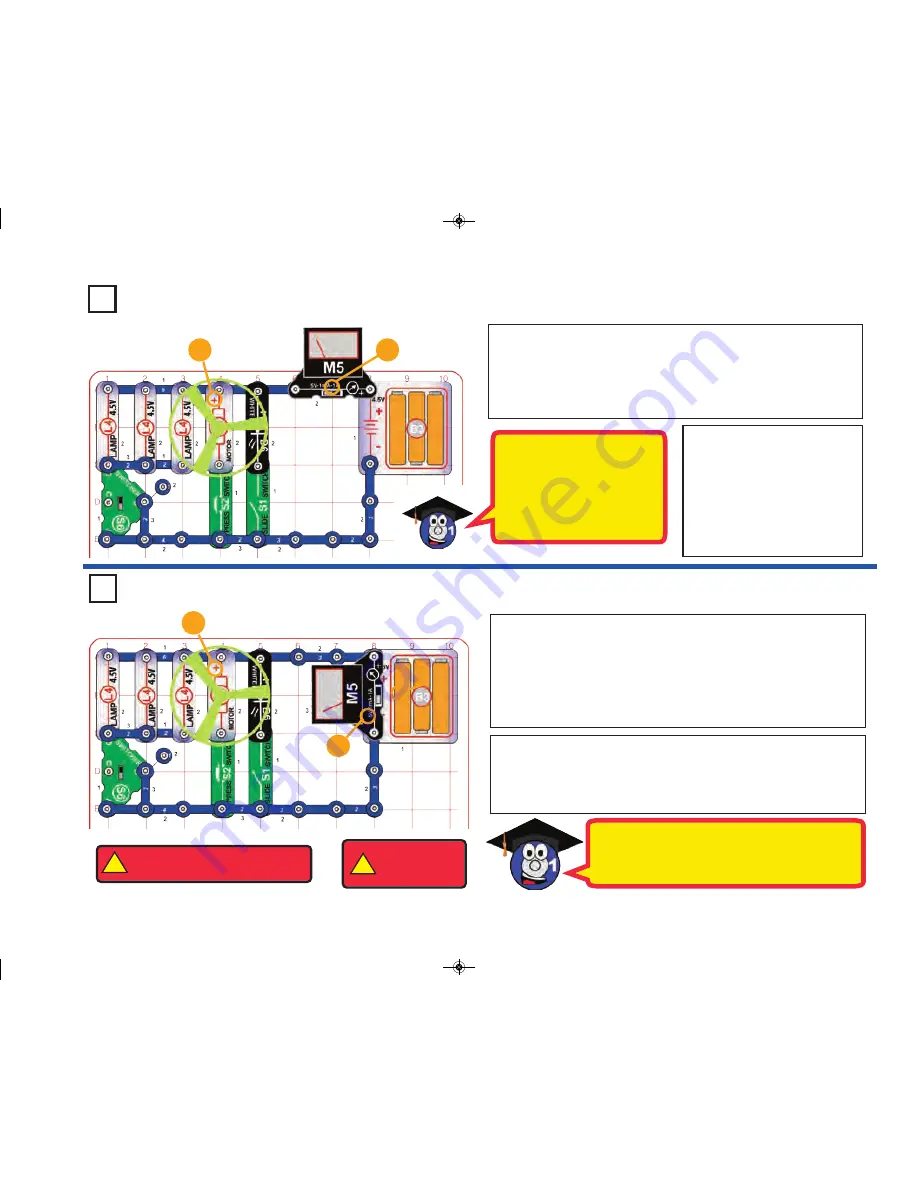
Project 39
Big Load
Build the circuit, set the switcher (S6) to the middle or lower position (off),
set the meter (M5) to the 1A setting, and place the fan on the motor (M1).
Set the switcher to the top position to light the lamps (L4), push the press
switch (S2) to spin the motor, and turn on the slide switch (S1) to light
the white LED (D6). Try each switch separately and in different combi-
nations, and compare the current measured on the meter.
Remove the fan from the motor
and compare the current. Why is
it higher or lower?
!
WARNING:
Moving parts. Do not
touch the fan during operation.
!
WARNING:
Do not lean
over the motor.
+
1A
Project 40
Big Load - Voltage
Use the preceding circuit but replace the meter (M5) with a 3-snap wire,
then set the meter to the 5V setting and place it across the battery holder,
as shown. With all the switches off, the meter measures the battery volt-
age. Turn on the switches to light the lights and spin the motor, compar-
ing how much the voltage changes for each. If available, compare
different batteries (such as old and new, or alkaline and non-alkaline) to
see how much the voltage changes.
Using this and the preceding circuit, compare the current and voltage
for each switch. Does the voltage drop more when the current is higher?
+
5V
The higher the current, the more
the lights and motor are “loading”
the batteries, making the batteries
work harder. Removing the fan
from the motor makes the motor
shaft easier to spin, lightening its
load.
The battery voltage (electrical pressure) may drop as
the current increases, because the batteries may not be
able to supply all the current the circuit needs. This ef-
fect is more noticeable when the batteries are weaker.
-42-
SC_STEM1_manual_PRINT.qxp_Layout 1 7/13/17 4:43 PM Page 43
















































